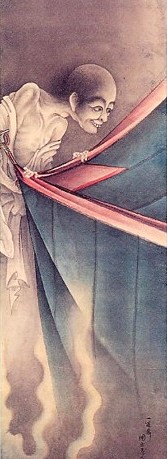 Every August, Zenshoan temple in Tokyo opens the doors to its Yurei-ga Gallery, a private collection of Edo-period ghost scrolls. The 50 silk paintings, most of which date back 150 to 200 years, depict a variety of apparitions from the forlorn to the ghastly.
Every August, Zenshoan temple in Tokyo opens the doors to its Yurei-ga Gallery, a private collection of Edo-period ghost scrolls. The 50 silk paintings, most of which date back 150 to 200 years, depict a variety of apparitions from the forlorn to the ghastly.
The scrolls were collected by Sanyu-tei Encho, a famous storyteller (rakugo artist) during the Edo era who studied at Zenshoan. Encho is said to have collected the scrolls as a source of inspiration for the ghostly tales he loved to tell in summer.
Telling ghost stories has long been a popular summer pastime in Japan, and many people believe that chilling tales have the power to take the edge off the dreadful heat. Stories of shadowy souls also make a nice, macabre complement to all the August rituals (bon festivals, memorial ceremonies, grave cleaning, etc.) performed to welcome the spirits of departed ancestors as they return en masse to the earthly world.
The ghost scrolls are on display from August 1 to 31, from 10 AM to 5 PM. Zenshoan temple is located a five-minute walk from Sendagi station (in Taito ward) on the Chiyoda subway line. The entrance fee is 300 yen.
If you can't make it to the temple, check out an online version of the gallery at the link below.
[Link: Yurei-ga Gallery]
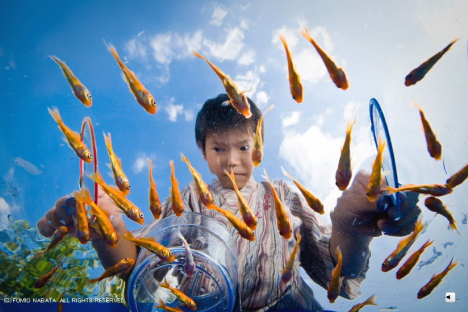
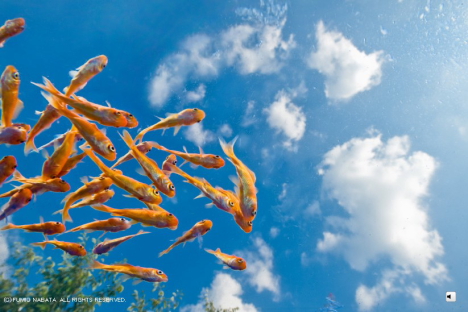

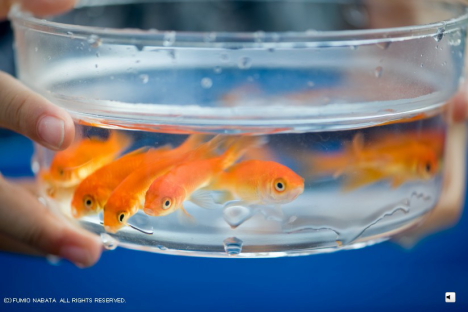


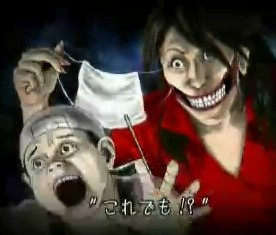 One of the cooler things about summer in Japan is the centuries-old tradition of swapping ghost stories. Some argue that the fear induced by a spine-chilling story can actually lower one's body temperature, making it a great way to deal with the summer heat. With this in mind as the summer heat sets in, here is "
One of the cooler things about summer in Japan is the centuries-old tradition of swapping ghost stories. Some argue that the fear induced by a spine-chilling story can actually lower one's body temperature, making it a great way to deal with the summer heat. With this in mind as the summer heat sets in, here is " Every August,
Every August, 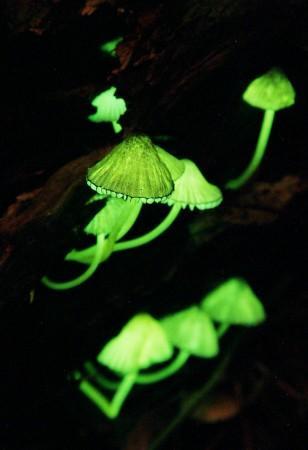 With the arrival of Japan's rainy season, a mysterious type of green, glow-in-the-dark mushroom begins to sprout in Wakayama prefecture. The Mycena lux-coeli mushrooms, known locally as shii no tomobishi-dake (literally, "chinquapin glow mushrooms"), sprout from fallen chinquapin trees. As they grow, a chemical reaction involving luciferin (a light-emitting pigment contained within the mushrooms) occurs, causing them to glow a ghostly green.
With the arrival of Japan's rainy season, a mysterious type of green, glow-in-the-dark mushroom begins to sprout in Wakayama prefecture. The Mycena lux-coeli mushrooms, known locally as shii no tomobishi-dake (literally, "chinquapin glow mushrooms"), sprout from fallen chinquapin trees. As they grow, a chemical reaction involving luciferin (a light-emitting pigment contained within the mushrooms) occurs, causing them to glow a ghostly green.